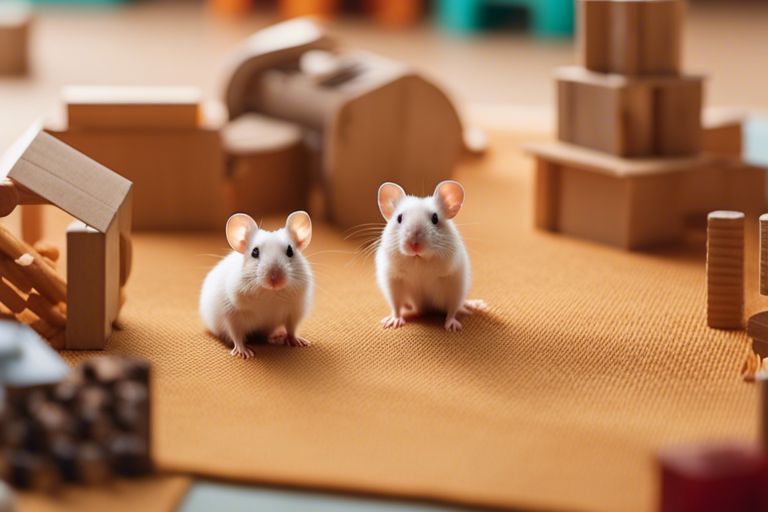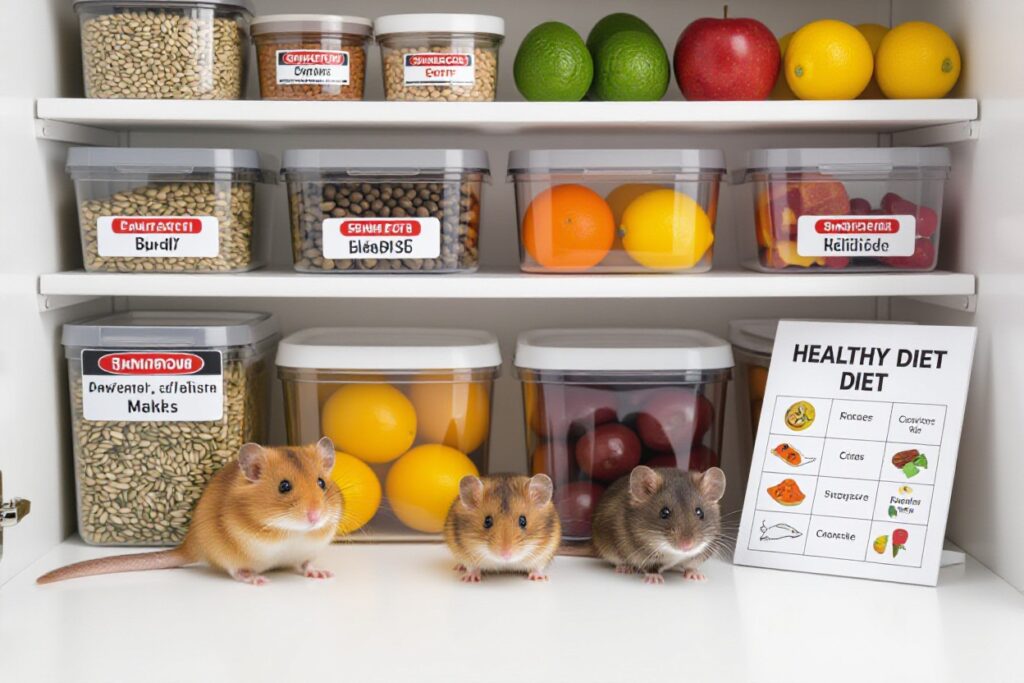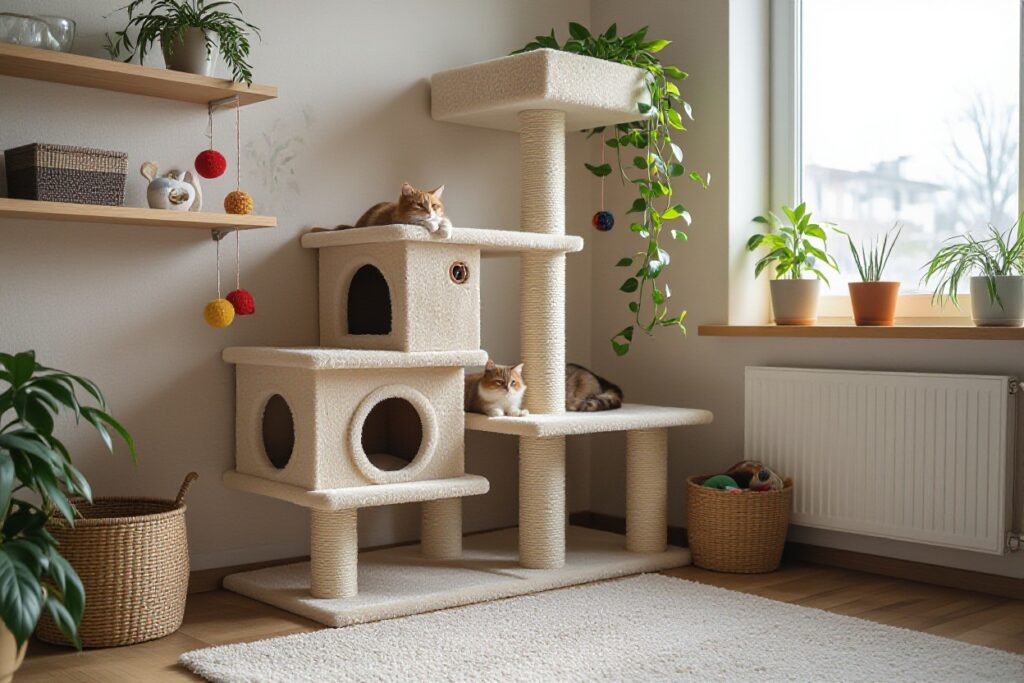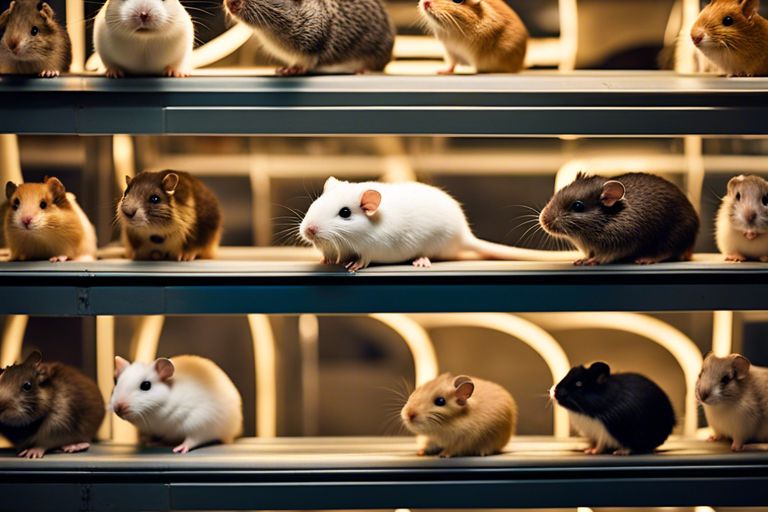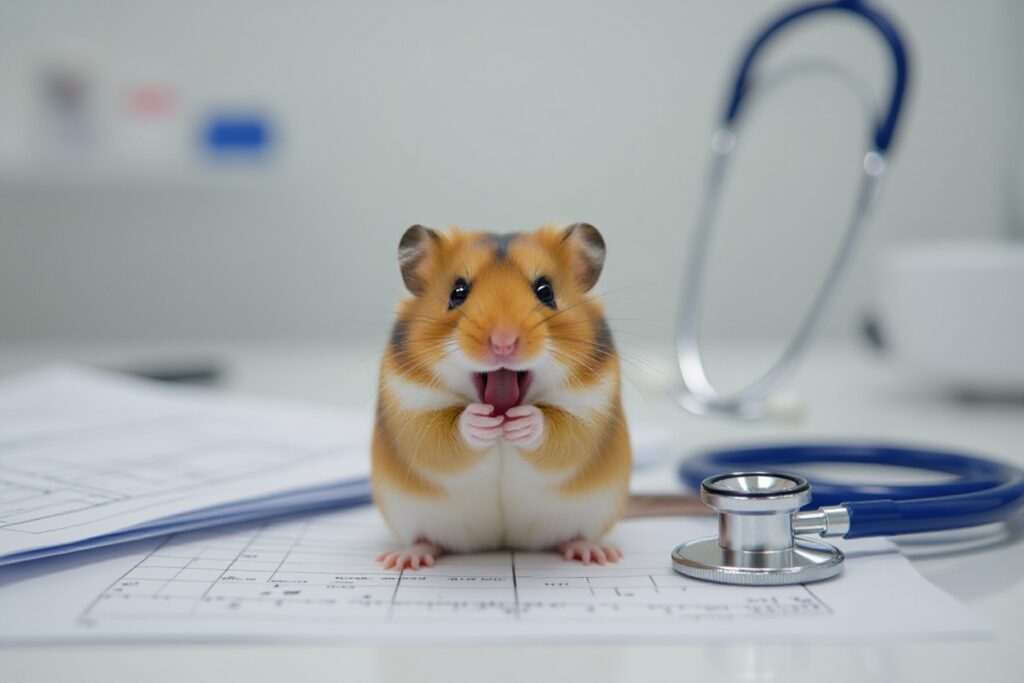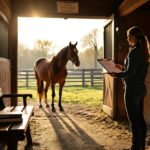Over the years, many pet owners have discovered the joy and satisfaction of creating their own toys for their beloved furry friends. When considering rodents like hamsters, mice, rats, and guinea pigs, providing enrichment is crucial for their physical and mental well-being. DIY rodent toys offer a cost-effective and creative way to keep your small pets active, engaged, and entertained.
While there are plenty of commercial toys available for rodents, making your own allows you to tailor the toys to your pet’s specific preferences and needs. From simple cardboard tubes and paper mache balls to more elaborate maze and puzzle toys, the possibilities are endless. With a little time and creativity, you can create a variety of stimulating toys that will provide hours of entertainment for your furry companions. Stay tuned as we share some exciting DIY rodent toy ideas to help enrich your pets’ lives!
Understanding Your Rodent’s Play Preferences
Species-Specific Behaviors
One of the key elements in providing enriching play activities for your rodent is understanding their species-specific behaviors. Different rodent species have unique natural instincts and preferences when it comes to play. For example, hamsters are known for their love of digging and tunneling, while rats enjoy climbing and exploring heights. By considering these natural behaviors, you can tailor your DIY toys to better suit your pet’s preferences.
Observing Your Pet’s Play Style
Species-specific behaviors provide a foundation for understanding your rodent’s play preferences, but observing your pet’s individual play style is equally important. Each rodent has its own personality and preferences when it comes to play. Take the time to watch how your pet interacts with different toys and environments. Do they prefer running on wheels, chewing on toys, or climbing on structures? By closely observing your pet, you can gain valuable insights into what types of toys and activities they enjoy the most.
Species-specific behaviors provide a starting point for understanding your rodent’s play preferences. However, observing your pet’s individual play style is crucial for tailoring enrichment activities to their specific needs. Take note of what activities your rodent gravitates towards and modify their play environment accordingly to ensure they stay happy, healthy, and mentally stimulated.
Materials Safe for Rodent Toys
Natural Materials You Can Use
Some of the safest and most stimulating materials for DIY rodent toys are natural options. These include untreated wood, such as pine or apple twigs, which rodents enjoy chewing on. Hay and straw are also excellent choices for creating a cozy nest or hiding spot for your pets. Other natural materials like dried herbs, flowers, and untreated grasses can add enrichment to your rodent’s environment.
Identifying Non-Toxic Plastics and Fabrics
Toys for rodents can also be made using non-toxic plastics and fabrics. When selecting materials, look for items labeled as pet-safe or non-toxic. Avoid materials that contain harmful chemicals like PVC or BPA, which can be dangerous if chewed on by your pets. Opt for sturdy plastics like HDPE or durable fabrics such as fleece or cotton that can withstand your rodent’s natural chewing behavior.
Rodents have a tendency to chew on items in their environment to wear down their teeth, so it’s crucial to provide them with safe materials to prevent any harm. Always supervise your pets when introducing new toys to ensure they are using them safely.
Natural fibers like jute or sisal can also be used for rope toys or as part of a climbing structure for your rodents. These materials are considered safe for pets and provide additional mental and physical stimulation for your furry friends.
DIY Chew Toys
Despite the wide variety of commercial chew toys available for rodents, many pet owners opt to make their own DIY chew toys. Not only can this save money, but it also allows for customization and creativity in providing enrichment for your furry friends.
Simple Wood Block Chews
To create simple wood block chews for your rodents, you can purchase untreated wooden blocks from a craft store or hardware store. Make sure the wood is safe for chewing and has not been treated with any chemicals. You can also repurpose wooden items such as small branches from fruit trees, as long as they have not been sprayed with pesticides. Simply introduce these wooden blocks into your rodent’s habitat, and watch as they gnaw and chew, helping to keep their teeth healthy and trimmed.
Edible Chew Toy Recipes
An alternative to wooden chews is to create edible chew toys for your rodents. There are numerous recipes available online that involve mixing ingredients like hay, oats, and flour to create tasty and chewable treats for your pets. These homemade chew toys can provide mental stimulation for your rodents as they work to extract the treats from the toy, promoting natural foraging behaviors.
This type of enrichment can also help to bond with your pet rodents as you spend time creating these treats together. Just make sure to research and use ingredients that are safe for your specific type of rodent, as some foods may be harmful to certain species.
Climbing and Exploration Toys
Many rodent enthusiasts understand the importance of providing their furry friends with a stimulating environment to prevent boredom and promote physical activity. Choosing the right climbing and exploration toys can help keep your rodents healthy and happy. Here are some DIY ideas to create fun and affordable enrichment options for your little companions.
Step Ladders and Bridges
Step ladders and bridges are excellent additions to your rodent’s cage, providing opportunities for climbing and exploration. You can easily make step ladders using popsicle sticks or thin wooden dowels glued together in a ladder-like fashion. Secure the ladder inside the cage to create a fun climbing challenge for your rodents. Bridges can be constructed using sturdy cardboard or wooden planks, offering a pathway for your rodents to traverse from one area to another.
Tunnel Systems You Can Create
Create a maze of tunnels for your rodents to explore and enjoy. You can use cardboard tubes from paper towel rolls or PVC pipes to create a network of tunnels that your rodents can navigate. Connect the tunnels using connectors or create a multi-level system for added excitement. Tunnels provide not only physical stimulation but also mental enrichment as your rodents explore their way through the maze.
Ladders can also be integrated into the tunnel systems to add another element of fun and challenge for your rodents. By incorporating different textures and levels in the tunnels, you can create a dynamic environment for your pets to climb, explore, and play.
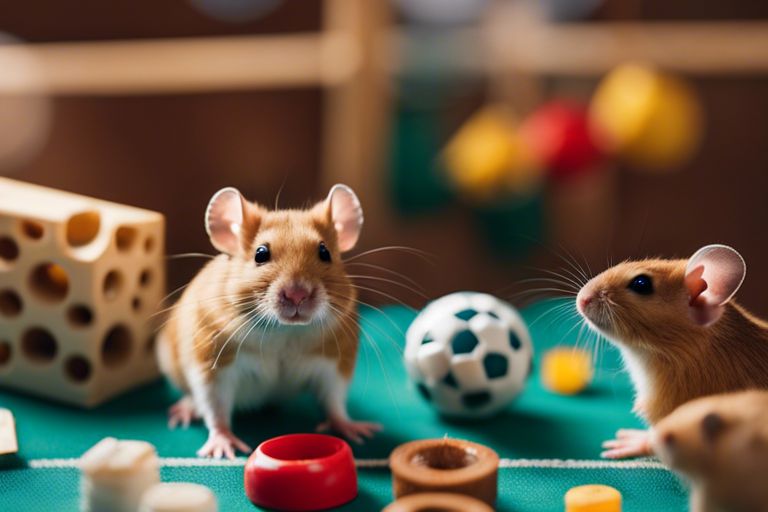
Foraging and Puzzle Toys
Homemade Foraging Balls
Balls are a fantastic way to engage your rodent in a fun and stimulating foraging activity. You can create your own foraging balls using materials such as empty toilet paper rolls or small cardboard boxes. Simply fill these balls with your pet’s favorite treats or pellets and let them roll the ball around to discover the hidden treasures inside. This not only provides physical exercise but also mental stimulation for your furry friend.
DIY Puzzle Boxes for Mental Stimulation
Another great way to challenge your rodent’s mental agility is by introducing DIY puzzle boxes. These boxes can be made from simple materials like cardboard or wood, with various compartments and sliding doors to hide treats or toys. By encouraging your pet to figure out how to open the boxes to access the rewards inside, you are promoting problem-solving skills and keeping them mentally active.
For instance, you can start by creating a basic puzzle box with a sliding door that reveals a treat when opened. As your rodent becomes more adept at solving the puzzle, you can increase the complexity by adding more compartments or obstacles to overcome. This not only keeps them entertained but also helps in preventing boredom and behavioral issues.
Comfort and Nesting Toys
Soft Bedding from Recycled Materials
Now, let’s talk about providing comfortable and eco-friendly bedding options for your furry friends. The use of soft bedding made from recycled materials not only ensures a cozy nest for your rodents but also promotes sustainability. There are various materials you can repurpose for this purpose, such as shredded paper, cardboard, or old fabric scraps.
Cozy Hammocks and Hanging Pouches
The comfort of your small pets is imperative, and providing cozy hammocks and hanging pouches can offer them a warm and secure resting place. These accessories not only serve as a comfortable spot for napping but also add an element of fun to your pet’s environment. You can easily create these items using soft fabrics or old t-shirts to ensure a snug and safe resting place for your rodents.
Another great benefit of hammocks and hanging pouches is that they can help save space in your pet’s enclosure. By suspending these items from the cage walls or roof, you can create more floor space for exercise and exploration, promoting your pets’ physical and mental well-being.
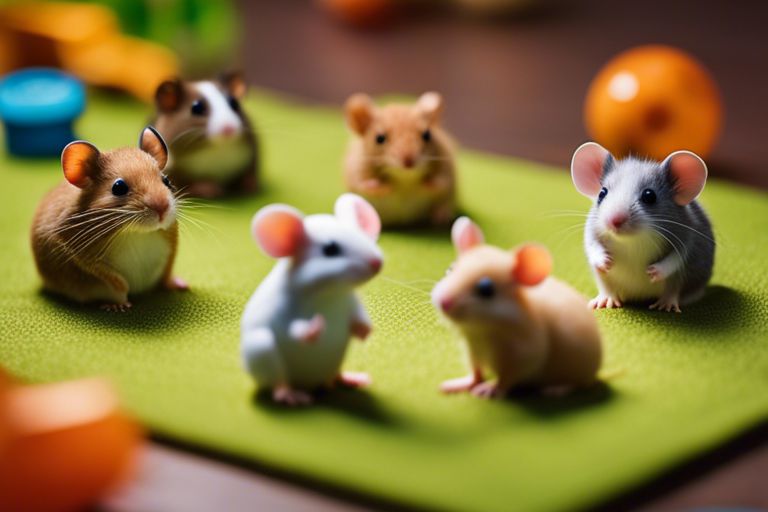
Maintenance and Safety
Regular Inspection and Cleaning of DIY Toys
Cleaning and maintaining your DIY rodent toys is crucial for keeping your pets safe and healthy. Regularly inspect the toys for any signs of wear and tear, such as loose parts or sharp edges that could potentially harm your furry friends. Use a pet-safe disinfectant to clean the toys, especially if they are made of materials that can harbor bacteria.
It is recommended to clean the DIY toys at least once a week, or more frequently if they are heavily soiled. Rotate the toys regularly to prevent boredom and give your rodents a stimulating environment.
When to Replace or Remove Toys
Cleaning is not the only aspect of maintenance when it comes to DIY rodent toys. It is important to monitor your pets’ behavior around the toys to determine when they need to be replaced or removed. If you notice any signs of excessive chewing, damage, or potential hazards, it is time to retire the toy. Rodents have a natural instinct to chew, so it is crucial to provide them with safe and durable toys to satisfy this behavior.
Understanding: Rodents are curious and active creatures that require mental stimulation to prevent boredom and stress-related behaviors. By regularly inspecting, cleaning, and replacing DIY toys, you can ensure your pets have a safe and enriching environment to thrive in.
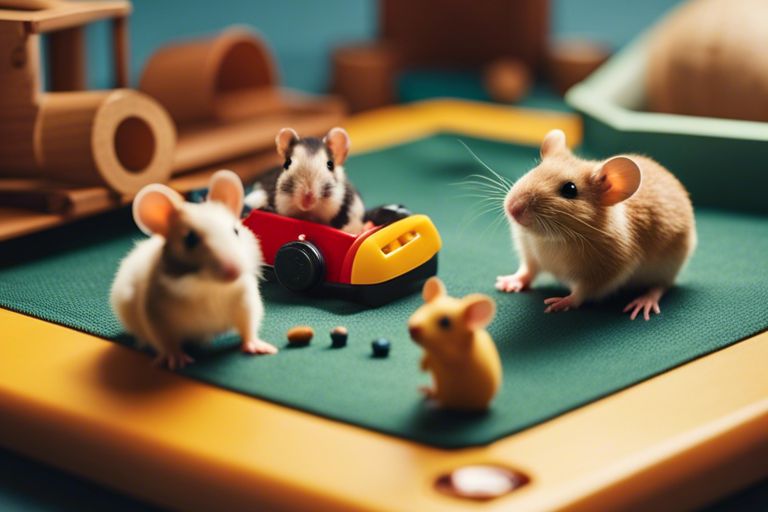
Inspiration and Ideas
Once again, it’s time to get creative with DIY rodent toys! Providing enrichment for your small pet doesn’t have to break the bank. By using simple, household items, you can create engaging toys that will keep your rodents active and entertained.
Themed Toy Creations
Creations: One fun idea for DIY rodent toys is to create themed toy sets. For example, you could make a mini obstacle course using toilet paper rolls, popsicle sticks, and cardboard boxes. Or, you could design a ‘foraging forest’ by hiding treats inside paper towel tubes filled with shredded paper. Themed toys not only provide mental stimulation for your rodents but also add an element of excitement to their playtime.
Community Contributions and Success Stories
On your DIY rodent toy-making journey, it can be inspiring to see what other rodent owners have created for their furry friends. In this subsection, we’ll showcase some community contributions and success stories to spark your imagination and motivate you to continue providing enriching experiences for your pets.
This section will feature photos and descriptions of DIY toys made by fellow rodent enthusiasts, highlighting the creativity and dedication that goes into providing top-notch enrichment for their beloved pets. With a little inspiration from these success stories, you’ll be well on your way to becoming a DIY rodent toy master!
To wrap up
Ultimately, DIY rodent toys offer a fun and affordable way to provide enrichment for your furry friends. By using simple materials found around the house, you can create toys that not only stimulate your rodent’s mind but also encourage physical activity. These toys can help prevent boredom, reduce stress, and promote overall well-being for your pets.
Whether you have a hamster, gerbil, mouse, or other small rodent, incorporating DIY toys into their environment can make a big difference in their happiness and health. Get creative, experiment with different materials, and enjoy watching your pets explore and play with their new toys!
FAQ
Q: Why is it important to provide DIY rodent toys for enrichment?
A: Providing DIY rodent toys is crucial for keeping your rodent mentally stimulated and preventing boredom, which can lead to behavior issues like chewing on cage bars or self-harm. Enrichment activities also promote physical exercise and overall well-being for your pet rodent.
Q: What are some safe materials to use for DIY rodent toys?
A: Safe materials for DIY rodent toys include untreated wood blocks, paper towel tubes, empty toilet paper rolls, and natural vine balls. It is important to avoid materials that are toxic or could pose a choking hazard to your rodent.
Q: How can I make a simple DIY rodent toy at home?
A: You can create a simple DIY rodent toy by stuffing a toilet paper roll with hay or treats, or by hanging a piece of untreated wood from the top of the cage for climbing and gnawing. Be creative with safe materials to provide your rodent with engaging toys.
Q: How often should I rotate my rodent’s toys for enrichment?
A: It’s a good idea to rotate your rodent’s toys every week to keep them interested and engaged. Introducing new toys and rotating them regularly will prevent boredom and encourage exploration in your rodent’s environment.
Q: Are there any DIY rodent toys I should avoid making?
A: Avoid making DIY rodent toys with small or sharp parts that could be ingested and cause harm to your rodent. Also, steer clear of materials that are treated with chemicals or toxic substances. Safety should always be the top priority when making DIY toys for your rodent.
